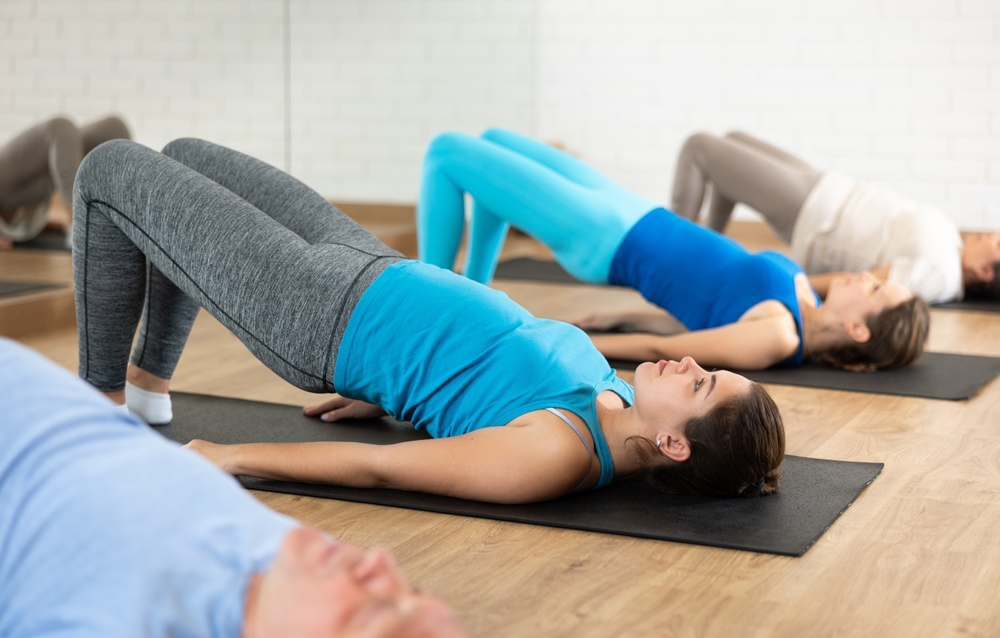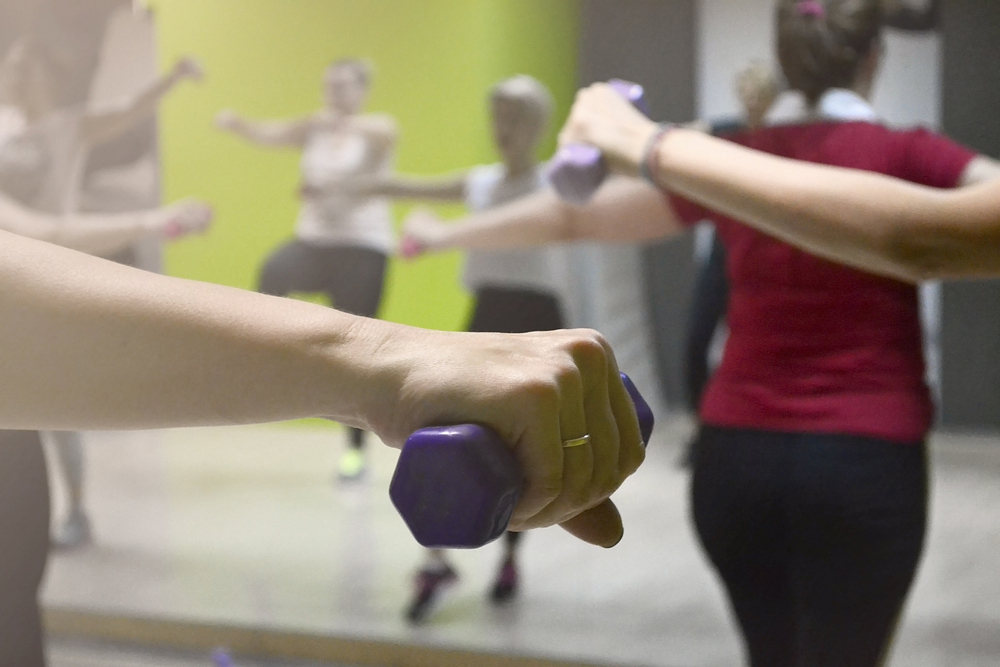Well done, mama! Your little one has arrived, and now you’re looking into postnatal classes to help with the transition.
While such classes can encompass many themes, from caring for a newborn to breastfeeding, we’ll be focusing on postnatal exercise classes that help mothers recover physically after giving birth.
With the guidance of trained professionals, you can safely and effectively work on healing and rebuilding your body — especially if the birth has taken a toll on your health and well-being.
Keep reading to discover the best postnatal classes near you!
Postnatal classes are good for:
- Physical fitness
- Postnatal recovery
- Mental wellbeing
When should I take a postnatal class?
Generally, it is recommended to wait at least six weeks after giving birth before starting postnatal classes. If you had a C-section, you might want to wait a little longer — depending on your circumstances.
Always check with your doctor first and tune into how you’re feeling. Don’t feel pressured to rush into exercising if you’re not ready, as this can cause more harm than good. (1)
Why are postnatal classes important?
Postnatal exercise classes can be incredibly important for your physical and mental health after giving birth.
Staying physically active can help you regain strength and energy while also reducing stress and improving your mood.
Is yoga or Pilates better for postpartum?
Both yoga and Pilates can be excellent postpartum exercises with a lot of overlapping features. Which one is better for you depends on your goals.
Pilates tends to focus on strengthening your core, while yoga may incorporate more stretching and stress reduction techniques.
Postnatal yoga classes
During a postnatal yoga class, you’ll learn modified yoga poses that safely target parts of the body that are commonly strained during pregnancy and childbirth. These areas include the hips and lower back.
Your instructor will likely introduce breathing techniques and relaxation practices to help reduce stress and anxiety as well.

Find postnatal classes near you: view postnatal classes
How soon after giving birth can you do yoga?
It’s recommended to wait at least six weeks to let your body recover after giving birth before starting yoga or other forms of exercise. If you had a C-section birth, it could take longer for your body to recover – you might only be ready for exercise after eight weeks. (1)
Remember, every woman’s recovery journey is unique. So make sure to listen to your body and speak to your doctor before starting any physical activity postpartum.
What poses can I do in postnatal yoga classes?
Some popular poses include modified versions of cat-cow and downward dog which involve getting down on all fours to perform movements that build core strength.
Additionally, poses such as seated twists and hip openers can aid in relieving tension and discomfort in the lower back and hips.
Is yoga good for postpartum?
Yoga can be a good postpartum exercise. With its wide variety of poses, it has a good balance of strength-building, relaxation, and stretching. Plus, yoga can be easily modified to suit postpartum bodies that require gentler movements.
Postnatal yoga with baby
Most postnatal yoga classes welcome babies in tow! You’ll often find yourself holding your baby while striking a pose or simply enjoying your workout while they relax on a mat near you.
Postnatal yoga classes near you
Almon Yoga’s postnatal yoga class in London offers a supportive environment for mothers looking to rebuild their bodies after birth. Crèche help is available if you choose to bring your baby!
Life by Margot’s postnatal yoga lessons in London helps mothers to strengthen key parts of their bodies (pelvic floor and core) after birth. Feel free to bring your baby along!

Find postnatal classes near you: view postnatal classes
Postnatal Pilates classes
Pilates is well-known for strengthening the core muscles while improving flexibility and balance.
In the postnatal version of these classes, your instructor will guide you through modified exercises designed to target the muscles that were stretched and weakened during pregnancy.
How soon can I do Pilates after giving birth?
Generally, it is recommended to wait at least six weeks after a vaginal delivery, or eight weeks after a C-section, before engaging in any strenuous physical activity. However, every woman is different, and it’s essential to consult with your doctor before starting any exercise routine. (1)
What is postnatal Pilates?
Postnatal Pilates is a modified version of traditional Pilates. It’s low-impact and focuses on strengthening your core muscles and posture.
Some common postnatal pilates exercises include pelvic floor lifts, leg slides, and hip twists.
Pelvic floor lifts help target the muscles that support the bladder and uterus. Leg slides and hip twists can help tone your thighs and glutes while stretching out your lower back. (2)
What Pilates exercises should I avoid postpartum?
It’s best to steer clear of abdominal Pilates exercises that involve full sit-ups, planks, or crunches.
These movements can put too much pressure on your already weakened abdominal muscles and pelvic floor. (3)
Does Pilates help with the postpartum belly?
Yes, Pilates can help strengthen your postpartum belly! It’s a low-impact exercise that focuses on building core strength and stability, which helps to tone and tighten the abdominal muscles around your postpartum belly.
Postnatal pilates classes near you
Life by Margot’s postnatal Pilates class in London gives mothers a safe, full-body workout post-birth.
Postnatal barre classes
Barre is a low-impact workout that combines elements of ballet, yoga, and Pilates to help strengthen and tone your muscles. The focus is more on fitness rather than dance technique.
During a typical postnatal class, you’ll use a ballet barre (or other support structure around waist height) to perform modified moves like squats and leg lifts which are safe for your after-birth body. (4)
Are barre classes good for you postpartum?
Barre is a great way to ease back into a workout routine postpartum, as it’s designed to build strength while being gentle on your body.
The ballet-inspired movements and emphasis on proper alignment make it a safe and effective option for new moms.
When should I start barre postpartum?
It’s best to wait at least six weeks after delivery before attending postpartum workout classes like barre, but it’s always best to check with your doctor first. Those who underwent C-sections or had birth complications might need to wait a little longer. (1)
What exercises should you not do postpartum?
You should avoid exercises that put too much pressure on your abdominal region, like sit-ups and crunches. This is especially so for mothers who’ve had C-section births.
Stick to safer and gentler modified moves that progressively help you to build up core strength. (5)
Postnatal barre classes near you
Life by Margot’s postnatal barre class in London blends the best parts of ballet, yoga, and pilates to give you a full-body workout. Babies can attend these classes with you too!
Best postnatal classes in London
Life by Margot offers postnatal yoga, Pilates, and barre classes in London for mothers who want to strengthen their bodies after birth. A great choice if you’d like variety!
Almon Yoga has a postnatal yoga class in London (with crèche help!) to help with recovery and fitness after birth in a safe manner.
Pilates with Sophie gets mamas moving in their postnatal Pilates class in London. You’ll work on building your core and strength while connecting with other mums in their small classes.
FAQs about postnatal classes
How long are you classed as postnatal?
Most healthcare professionals define the postnatal period as the first six weeks after delivery. (6) However, it’s important to remember that every woman’s body and recovery process is unique.
Don’t rush into anything too quickly, and be sure to schedule regular check-ups with your doctor to ensure you’re healing properly.
Can I start yoga at 3 weeks postpartum?
Starting yoga at 3 weeks postpartum is definitely within reach and can be a great way to ease back into physical activity in a safe and gentle way.
However, it’s important to listen to your body and start slowly with modifications, especially if you had a C-section or experienced any complications during delivery.
What yoga poses to avoid postpartum?
Avoiding yoga poses such as full sit-ups, deep twists, backbends, and inversions can help ensure a safe recovery and prevent any discomfort postpartum. This is especially so if you’ve had a C-section and might need extra recovery time for your abdominal region. (7)
How to reduce belly fat after pregnancy with yoga?
Focusing on yoga poses that build core strength can help to reduce fat around the belly area post-pregnancy. Remember to start slow and use modified poses that do not put too much stress on the abdominal muscles. (8)
Does yoga affect breast milk?
As long as you maintain a healthy, balanced diet, exercises (like yoga) should not affect your breast milk. In fact, some studies suggest that mothers who practise yoga report greater confidence in breastfeeding. (9, 10)
Is barre bad for diastasis recti?
Barre is generally a good, low-impact workout that’s safe for those with diastasis recti. (11)
However, you should be careful when it comes to certain poses like planks or crunches, which can exacerbate the condition. This is why it’s important to practise barre under the guidance of a trained instructor who can teach you the proper pose modifications to exercise safely. (12)
References
- “Postpartum fitness tips for new moms”, What to Expect
- “Pilates booklet”, NHS
- “A guide to postpartum Pilates”, Pilates Anytime
- “What Is Barre Class All About—And Is It Actually An Effective Workout?”, Women’s Health
- “Safe return to exercise after pregnancy”, Pregnancy, Birth & Baby
- “WHO Technical Consultation on Postpartum Care”, National Library of Medicine
- “Yoga moves to avoid after giving birth”, Motherly
- “Saying Adieu to Your Postpartum Belly (but Celebrating It, Too)”, Healthline
- “4 Big Things You Need to Know About Exercising While Breastfeeding”, The Bump
- “Effect of Postpartum Yoga on Breastfeeding Self-Efficacy and Maternal Attachment in Primiparous Mothers”, Breastfeeding Medicine
- “Modifications for abdominal separation”, Barre3
- “5 best diastasis recti exercises”, Verywell Family

